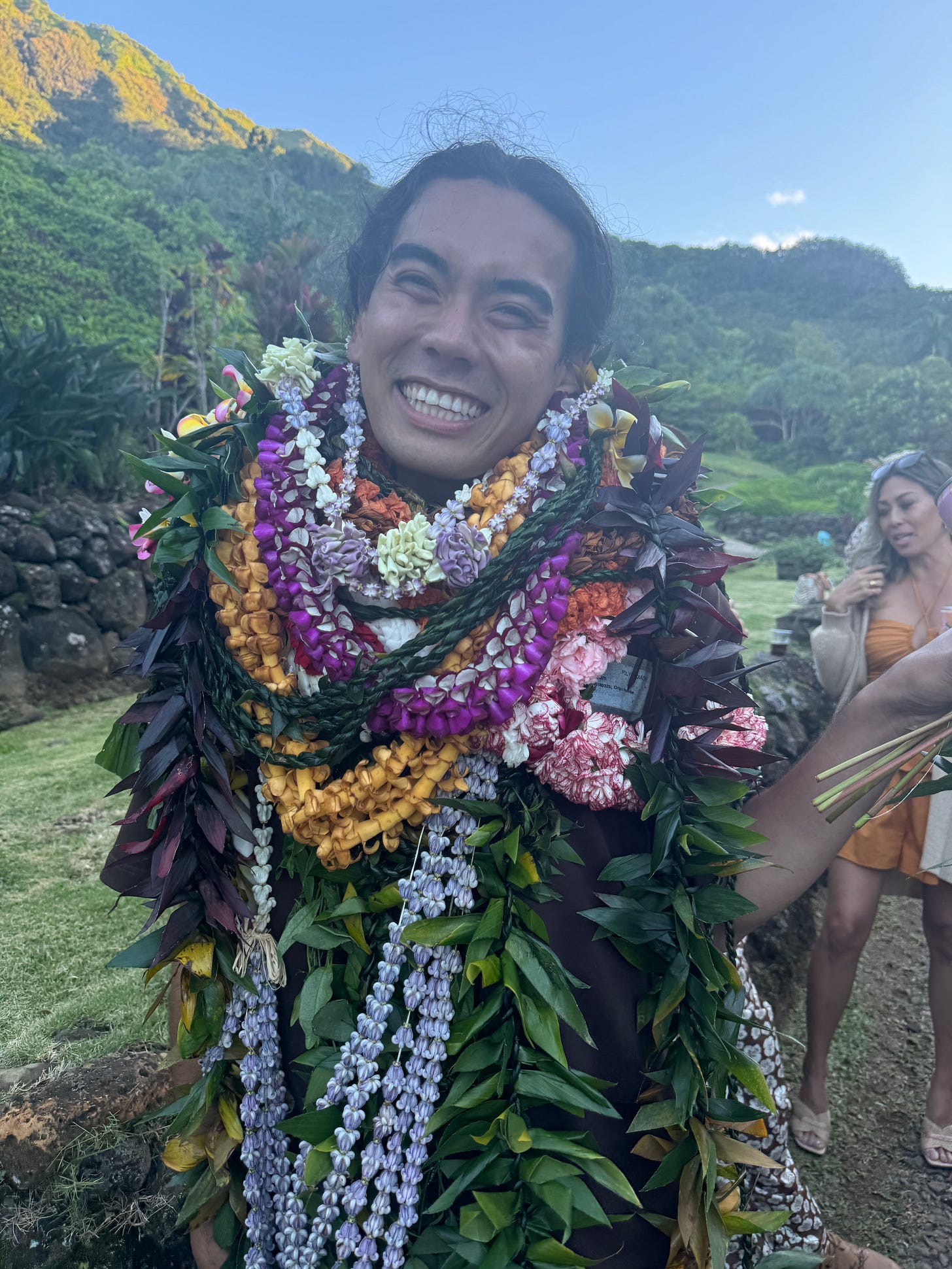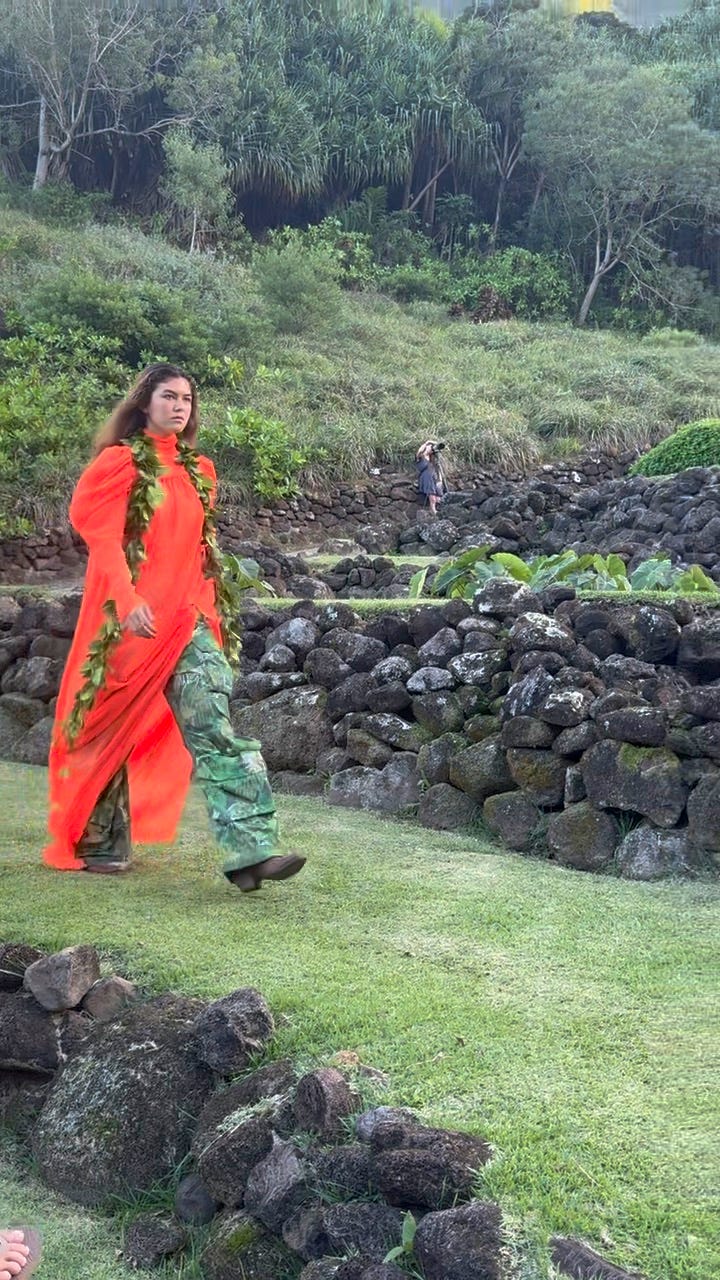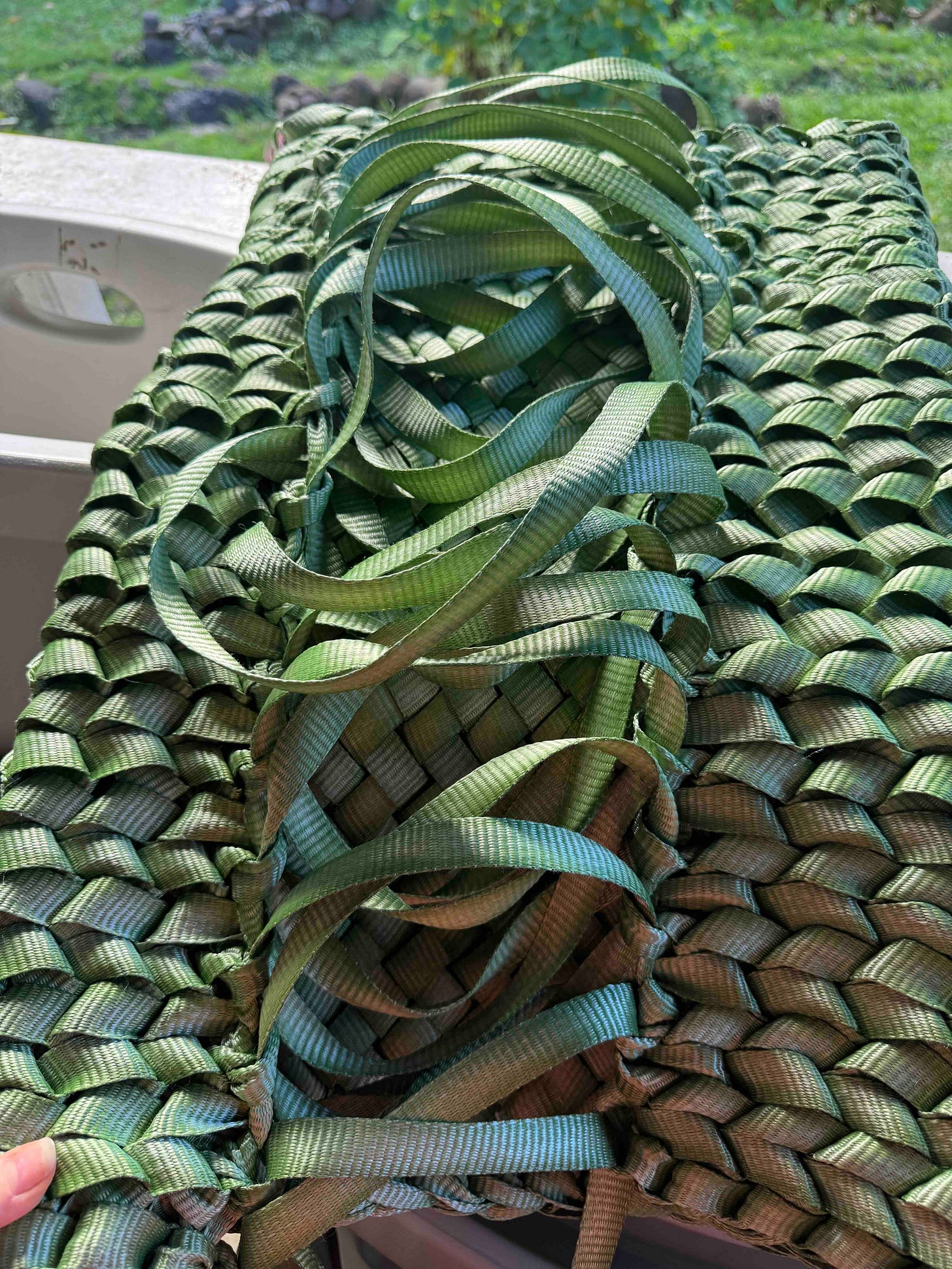You heard it here first, Rocket Ahuna, Kanaka Maoli (Native Hawaiian) fashion designer is on fire and on the rise.
After graduating in 2022 from FIT (Fashion Institute of Technology) in New York, Rocket moved to Oahu to start his namesake brand. For his 3rd season, he came home to Kaua’i to present his Spring/Summer 2025 collection at Limahuli National Tropical Botanical Garden.
I’ve been attending fashion shows for close to 3 decades in Paris, London, Milan, New York and even Los Angeles. Some of them (Galliano in his Dior Couture days, Karl for Chanel in special locations like Dallas and Las Vegas, Riccardo Tisci at Givenchy Couture…) were spectacular theatrical productions, rivaling anything Hollywood could build on a soundstage.

But to experience Rocket’s collection in such a special place, with the sun setting over the sacred mountain Makana (the gift) was a whole other emotional level. Adding to the mana (spiritual energy, power) was his casting of locals from the Halele‘a district as models. It was an ohana (family) affair with the entire community turned up and out in their finest, cheeehoo’ing each look.
Some of my favorites included the “Oahi” dress, hand dyed with olena (tumeric,) red hibiscus and alae (red dirt) as seen below modeled by Pohai. Oahi is a fire throwing ceremony that used to take place from atop Makana. In a show of prowess, long pieces of hau or papala wood (we are talking 30+ feet!) would be carried up by men and then lit from the top and thrown out over the ocean using the winds.
Below, the Palaka plaid suit worn by Noah, was inspired by a print first made popular by plantation farmers in the 1900s.

Below, Ginger wears a sheer hunting mu’u and camo cargo pants, accessorized by a maile lei.
Below, Kahea models a mule tape corset dress hand made by Raka Wood for Rocket Ahuna.
For the closing look below, Nativa wears the Hinano gown and carries a bouquet of hinano. The hinano flower grows on the hala tree, and has been traditionally used as an aphrodisiac. Hinano symbolizes love and desire, and the powder from this flower can be dusted on one’s body to entice a love interest or put into a tea to drink as a “love potion”. This is one of my favorite native flowers. I have collected many a hinano to harvest the powder, and used to take it internally with my morning matcha (watch out Erewhon!)
For reference, this is a freshly picked hinano I am holding, below.
Having been present at the beginning of many designers careers, I have seen that talent will take you so far, but if you don’t have hustle and business acumen it’s a rough industry to thrive in. Rocket’s ability to organize a massive production in the most remote part of Kaua’i (where things even more so operate “on island time” than usual,) while creating a tightly edited 22 piece collection that mixed bespoke with ready to wear, highly commercial pieces —and—launch a pre order “buy it now” within 2 hours of his runway show makes me confident that he will go the distance.
Much of Rocket’s work draws upon his childhood spent in the forest collecting indigenous plants and materials, in order to incorporate ʻāina, (land) both physically and spiritually, in his designs.
For example, his maile t-shirt, seen below on local model, engineer, quantitative marine ecologist and surfer Maluhia Kinimaka, worn with cargo pants featuring an endemic plant camouflage. The maile vine is considered sacred, used to make lei worn for special occasions, much more valuable than farmed orchid leis given to tourists at inclusive resorts. You can pre order both pieces on Rocket’s site.
Rocket’s inspiration is also deeply tied to the cultural practices he is steeped in, from studying hula to making lei hulu (feather lei,) considered the gemstone of Hawaiian royalty (a’li’i.) Lei hulu can take years to complete, as they are constructed by hand using precious feathers from endemic birds of Hawai‘i.

As Rocket and I discuss in our podcast, learning the art of lei hulu and other Hawaiian cultural practices is passed down first person. The student has to first prove to their kumu (teacher) that they are spiritually and mentally aligned before beginning a mentorship. Very little documentation of the process exists because of these traditions.
Below, a modern example of lei hulu circa 2014, from a show at the Lyman Museum in Hilo, Hawai’i featuring work from Kumu Doreen Henderson, a master crafter of lei hulu.
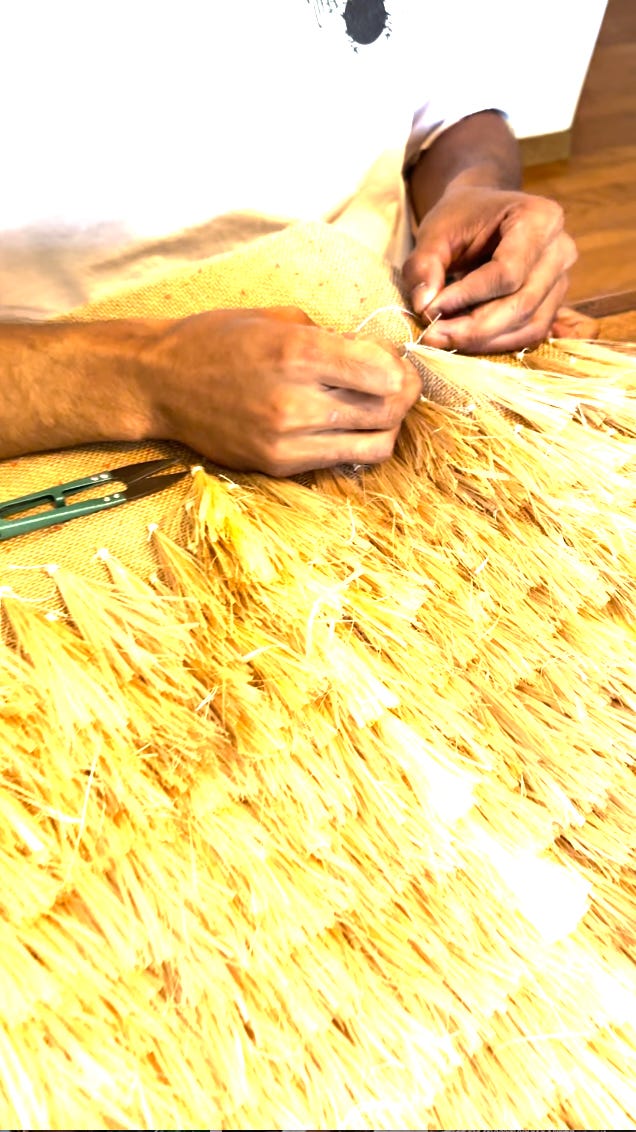
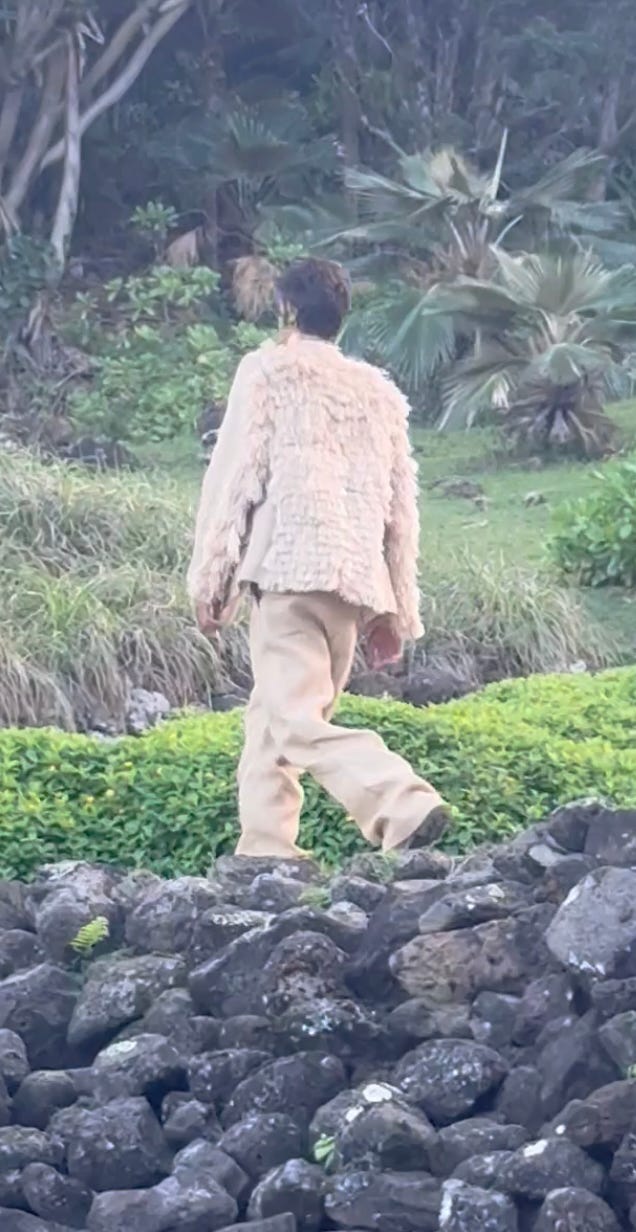
I’ve included a few images below from of Rocket’s first collection, presented for S/S 24, “Lau Ki, ” alongside mid 1860 photos from the Hawaii State Archive of Queen Emma (Emma Kalanikaumakaʻamano Kaleleonālani Naʻea Rooke,) a known fashion plate who remains a beloved figure in Hawaii.
Below, Pono Lyman is in the white jumpsuit and hat, Maluhia Kinimaka is at right with Rocket showing her a pose. All photos by Cole Turner.

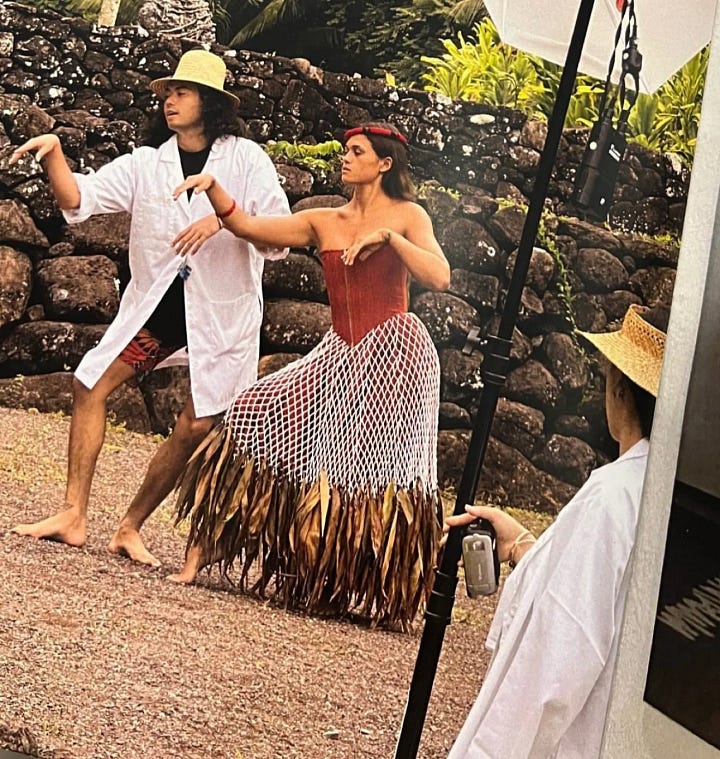
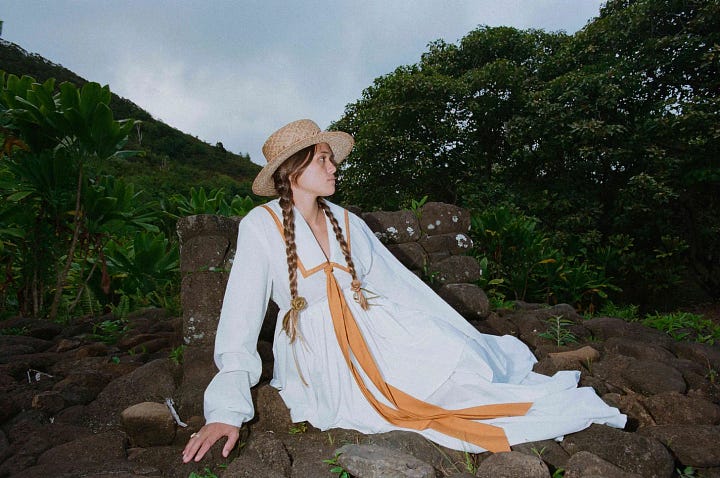

Above, Maluhia Kinimaka is at left and Nativa Law at right with a lei hulu crown (haku.)
Below, Queen Emma, at left dressed in holoki and wearing flower lei; at right dressed in white trimmed with black ribbons.
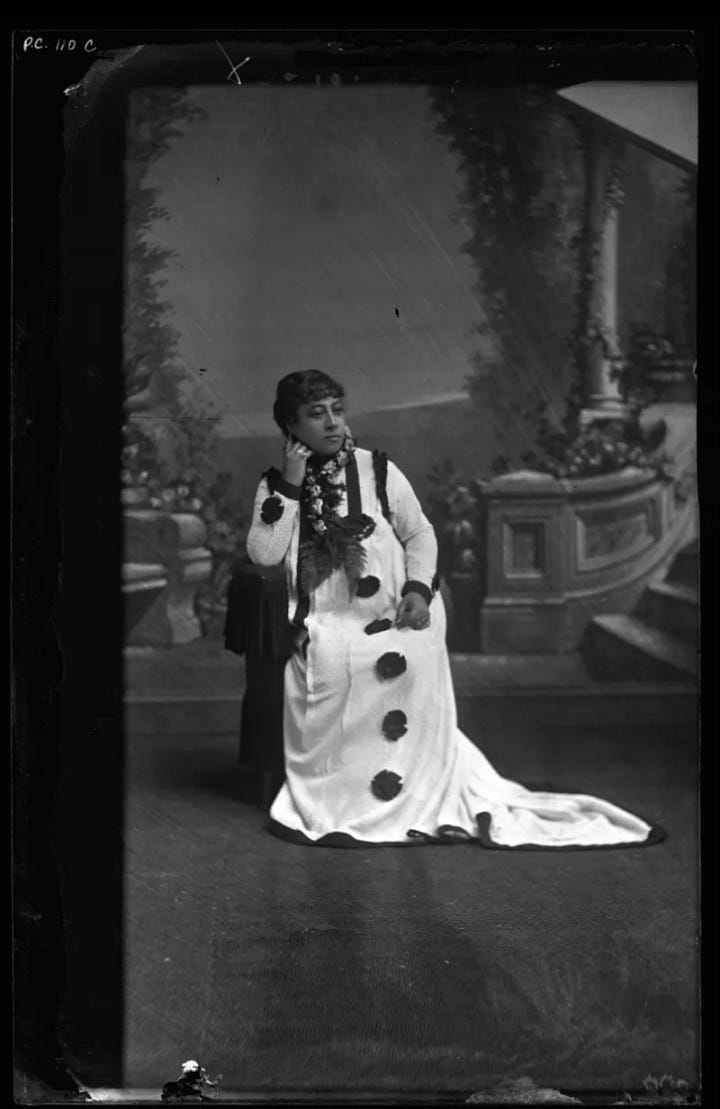
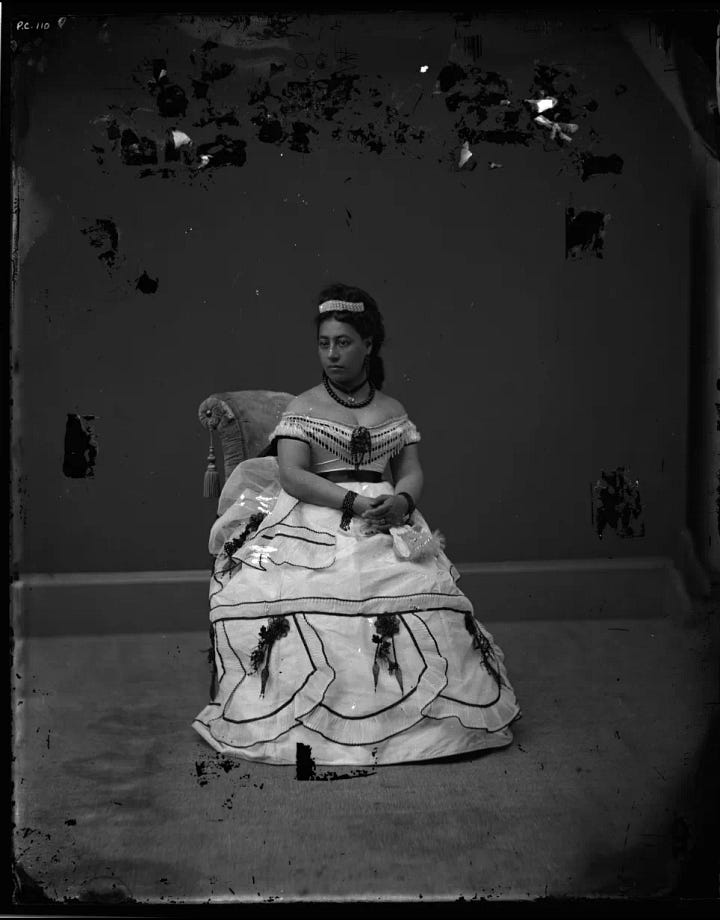
Rocket’s current collection, F/W 2024, which is close to sold out, was worn by many of the guests at Limahuli this past weekend including myself and Lei Wann, director of Limahuli Botanical Gardens, as seen below.
In our podcast at the top of this piece, Rocket and I discuss the history of Hawaiian fashion and craftsmanship, from the time of the ali’i to now; what eco-conscious fashion/ sustainability actually means and the difference between cultural appropriation and paying homage.
I hope you enjoy! To all the STARF*CKER subscribers who are fashion editors, buyers, investors and lovers, I am excited to put Rocket on your radar now…before he gets a job at a major house in Europe, which I’ve no doubt he will.
This piece was written and recorded in the Kingdom of Hawai’i with ALOHA



